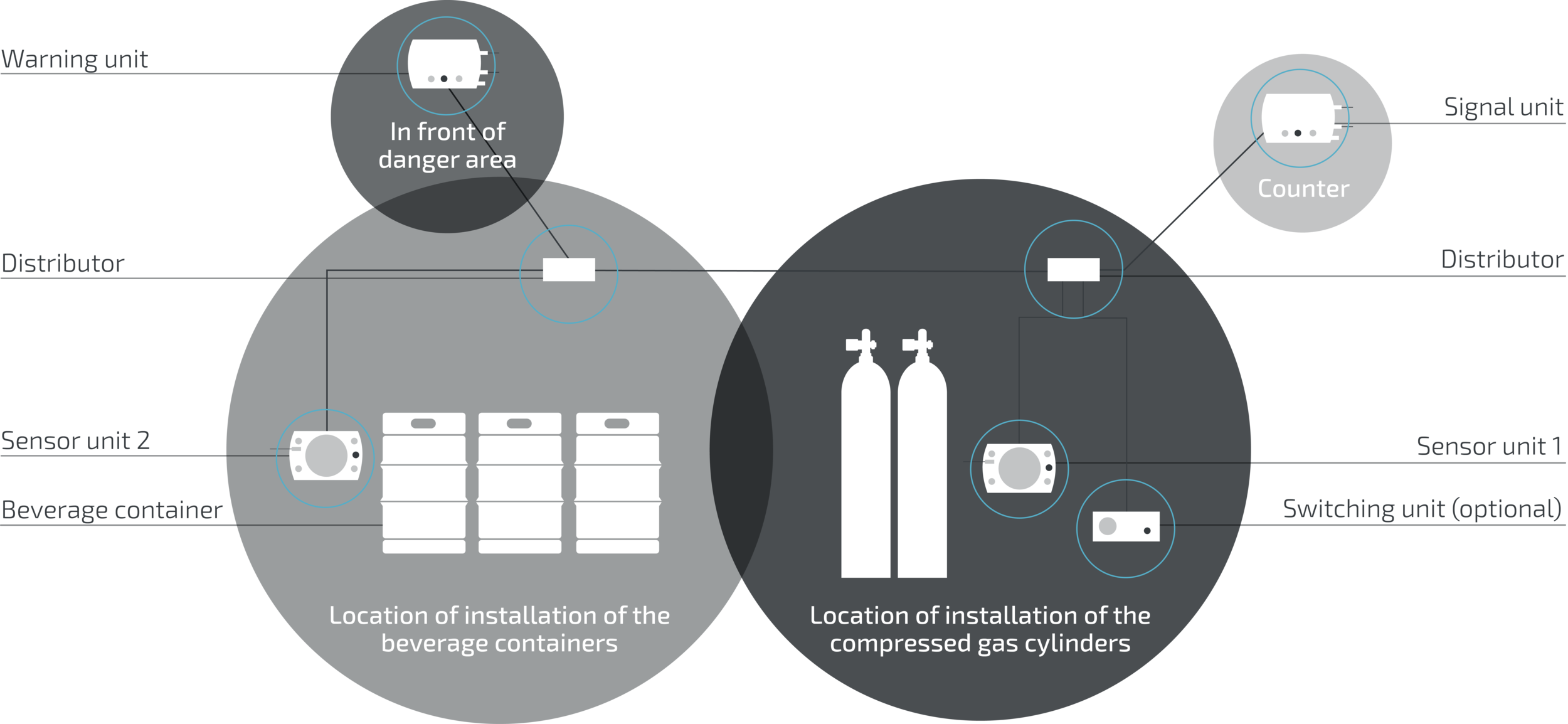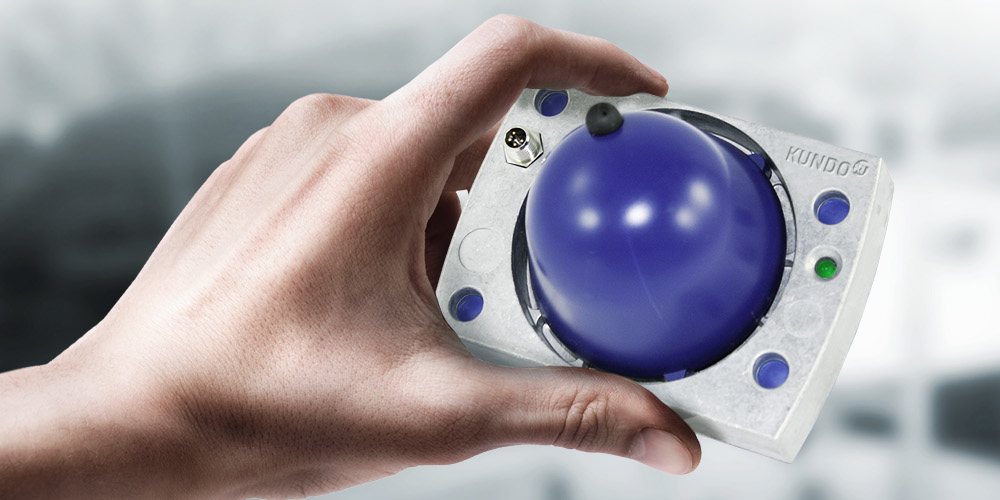Long-term safety under perfect conditions CO2 CONTROL – the safety system for monitoring dangerous CO2 concentrations
CO2 CONTROL is a decentralized safety system that monitors dangerous CO2 concentrations in artificially ventilated spaces.
The CO2 CONTROL system using the example of a dispensing system used at restaurants:

CO2 CONTROL The system components
Warning unit
The activation of the warning unit (control centre) requires that first all components are connected to the control centre, after which the warning unit is initialised.
Sensor unit
The sensor unit ensures precise and continuous monitoring of the CO2 content in the danger zone.
Signal unit
For the optical and acoustic safeguarding of other entrances to the danger zone.
Switching unit
For direct activation and supply of ventilators and additional alarm equipment through CO2 CONTROL.
Distributor
Builds the hub for all components of the internal system bus of CO2 CONTROL.
Alarm unit
Additional alarm horn and flashlights in combination with the AM/AM PLUS variants of CO2 CONTROL.
Functional principle
The security system is based on NDIR infrared measuring technology with a 2-channel measurement principle (reference channel / measurement channel). Factors such as deterioration and pollution are counterbalanced. High long-term stability is guaranteed.
Reliability
Owing to the geometry of the component parts, the open measuring system ensures sustainable and safe diffusion. Since error detection of the safety system is no longer possible when the gas supply is blocked, it is essential to prevent blocking of the gas supply.
Safe and low-maintenance application and installation
The system works with two alarm thresholds that can be individually calibrated: the pre-alarm and the main alarm. The CO2 CONTROL warning unit is located right before the entrance to the danger zone. As the control centre, it controls all other system components over an internal system bus.
An automatic self-monitoring system that is automatically repeated every three minutes ensures that errors, such as a cable break, missing data, divergent alarm thresholds or component stoppages are recognized and reported through a fault or error display. Quick and simple handling in the event of installation and initial operation guarantee error-free installation. Installation errors are automatically recognized and reported during the initial operations.
Simplified maintenance and no warranty deed for the installer
According to the industrial safety regulations, plants and equipment requiring monitoring must be regularly maintained. The sensor is exchanged once every four years ‒ and thus substitutes any testing and calibration with a test gas onsite!
The advance delivery of replacement sensors with a new four-year warranty releases the installer from full responsibility. The procedure for replacing the sensors is quick and easy. Old sensors are returned to the manufacturer, processed and thus enter the exchange circulation.



